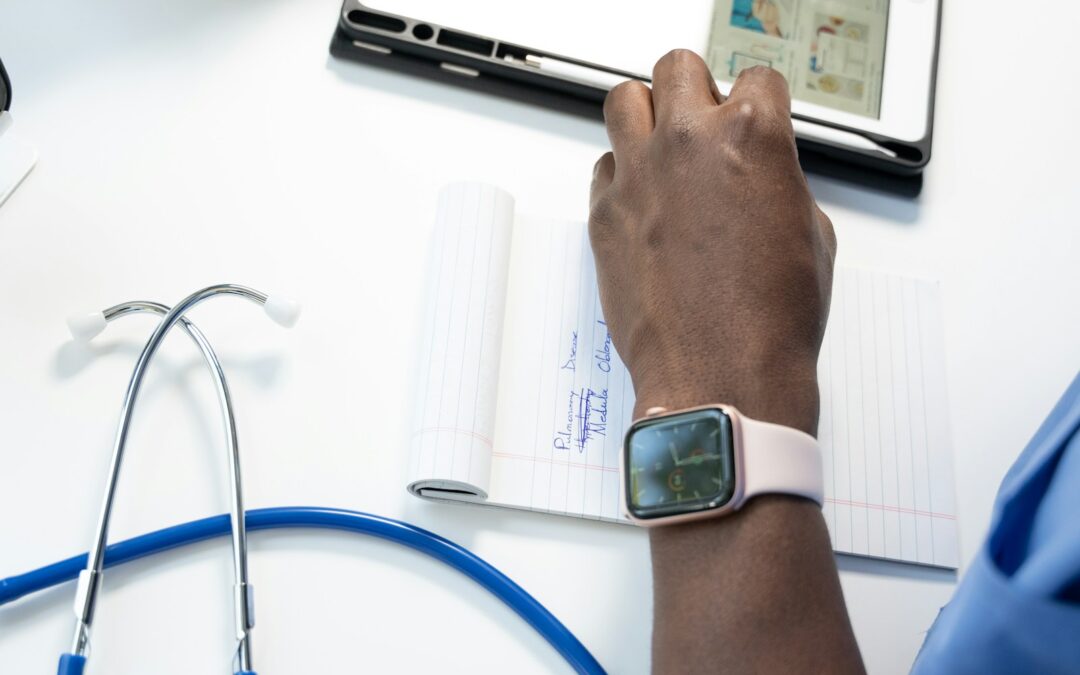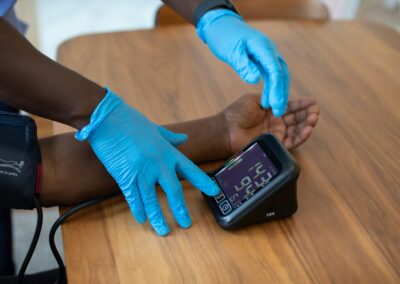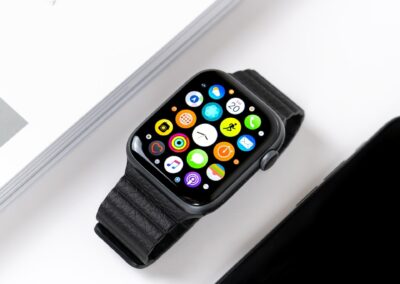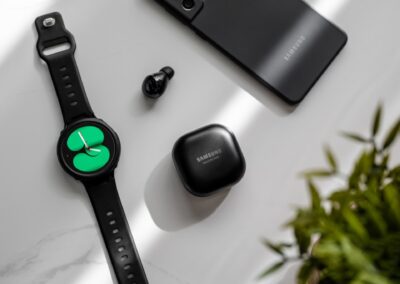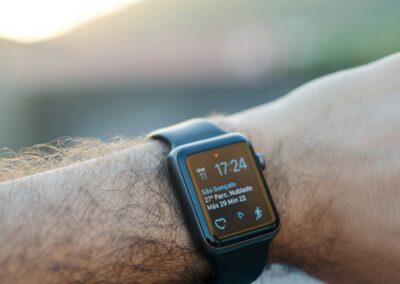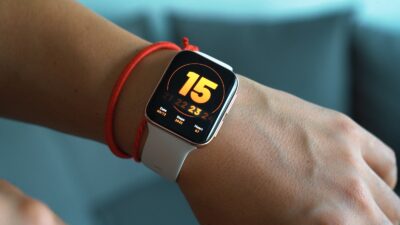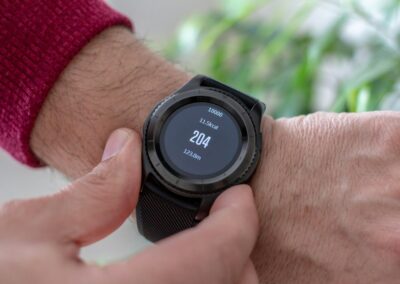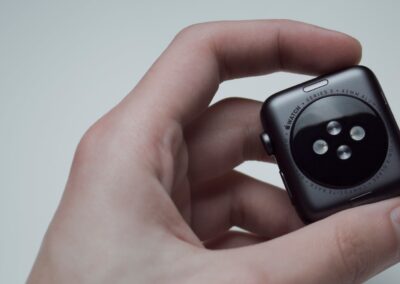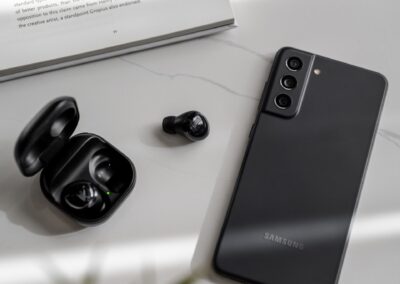Securing User Information in the Age of Wearable Technology
The Rise of Wearable Devices in Healthcare and Industry
In recent years, the proliferation of wearable devices for healthcare and industry has revolutionized various sectors, offering unprecedented levels of data collection and analysis. These devices, ranging from fitness trackers to industrial sensors, have become integral in monitoring and improving both individual health and operational efficiency. In regions like Saudi Arabia, UAE, Riyadh, and Dubai, the adoption of these technologies aligns with their strategic goals of becoming global leaders in innovation and technology.
Wearable devices in healthcare enable continuous monitoring of vital signs, allowing for early detection of potential health issues and personalized treatment plans. For instance, smartwatches equipped with ECG sensors can detect irregular heartbeats and alert users and their healthcare providers. This real-time health data collection improves patient outcomes and reduces healthcare costs by preventing severe health events.
In the industrial sector, wearable devices enhance worker safety and productivity. Smart helmets and vests can monitor environmental conditions, detect hazardous gases, and track worker fatigue. These devices provide real-time data to managers, enabling them to make informed decisions that improve safety and efficiency on the job site. By leveraging wearable technology, industries can reduce workplace accidents and enhance overall operational effectiveness.
Data Privacy and Security Concerns
Despite the benefits, the widespread use of wearable devices raises significant concerns regarding data privacy and security. These devices collect vast amounts of personal and sensitive information, which, if not properly protected, can be vulnerable to cyberattacks and data breaches. Ensuring the privacy and security of user data is paramount, particularly in regions like Saudi Arabia and the UAE, where data protection regulations are becoming increasingly stringent.
Wearable devices often connect to smartphones and cloud-based platforms, creating multiple points of vulnerability. Cybercriminals can exploit these vulnerabilities to access sensitive health and industrial data. For instance, unauthorized access to health data can lead to identity theft, insurance fraud, and other malicious activities. In the industrial sector, compromised data can disrupt operations and lead to significant financial losses.
To mitigate these risks, manufacturers and users of wearable devices must implement robust security measures. Encryption is essential to protect data transmitted between devices and servers. Additionally, multi-factor authentication (MFA) can enhance security by requiring users to verify their identity through multiple methods. Regular software updates and security patches are also crucial in addressing vulnerabilities and preventing cyberattacks.
Regulatory Frameworks and Best Practices
Governments and regulatory bodies play a crucial role in ensuring the security and privacy of data collected by wearable devices. In regions such as Riyadh and Dubai, authorities have introduced comprehensive data protection laws to safeguard personal information. Compliance with these regulations is mandatory for businesses operating in these regions, ensuring that they adhere to best practices in data security.
For example, the General Data Protection Regulation (GDPR) in the European Union serves as a model for data protection laws worldwide. It mandates that organizations implement strict data protection measures and obtain explicit consent from users before collecting and processing their data. Similar regulations are being adopted in the Middle East, reflecting a global trend towards enhanced data privacy and security.
In addition to regulatory compliance, businesses must adopt best practices to protect user data. This includes conducting regular risk assessments, training employees on data security protocols, and developing incident response plans. By fostering a culture of security and vigilance, organizations can minimize the risk of data breaches and maintain user trust.
Technological Innovations and Future Prospects
The Role of Artificial Intelligence and Blockchain
Advancements in artificial intelligence (AI) and blockchain technology offer promising solutions to enhance the privacy and security of wearable devices. AI algorithms can detect and respond to security threats in real-time, providing an additional layer of protection. For instance, machine learning models can analyze data patterns to identify anomalies and potential breaches, allowing for swift action to mitigate risks.
Blockchain technology, with its decentralized and immutable nature, offers a secure framework for data storage and transmission. By using blockchain, wearable devices can ensure that data is encrypted and verified through a distributed ledger, reducing the risk of unauthorized access. This technology is particularly relevant in regions like Dubai, where blockchain initiatives are being actively promoted to enhance digital security.
The integration of AI and blockchain in wearable devices can significantly improve data privacy and security. These technologies enable the creation of secure, transparent, and tamper-proof systems that protect user data while maintaining the functionality and convenience of wearable devices. As these technologies continue to evolve, we can expect even greater advancements in data protection for wearable devices.
Business and Leadership Implications
For business executives and mid-level managers, the adoption of wearable devices presents both opportunities and challenges. Ensuring the security and privacy of data collected by these devices is critical to maintaining user trust and compliance with regulations. Leaders must prioritize data protection and invest in the necessary technologies and practices to safeguard user information.
In the context of executive coaching services and project management, wearable devices can provide valuable insights into employee performance and well-being. By leveraging data from these devices, leaders can develop personalized coaching and development plans that enhance productivity and job satisfaction. However, this must be done with a strong emphasis on data privacy and ethical considerations.
In Saudi Arabia, UAE, Riyadh, and Dubai, where technological innovation is a key driver of economic growth, businesses that effectively manage data privacy and security will gain a competitive advantage. By adopting best practices and leveraging advanced technologies, organizations can harness the full potential of wearable devices while ensuring the protection of user data.
Conclusion: Balancing Innovation with Data Security
The rise of wearable devices for healthcare and industry data privacy represents a significant advancement in technology, offering numerous benefits for individuals and businesses. However, the collection and processing of sensitive data by these devices necessitate stringent security measures to protect user information.
By adopting best practices, complying with regulatory frameworks, and leveraging technological innovations such as AI and blockchain, businesses can ensure the privacy and security of data collected by wearable devices. This approach not only protects users but also enhances trust and drives business success.
As regions like Saudi Arabia, UAE, Riyadh, and Dubai continue to embrace modern technology, the responsible use and protection of data will be paramount. By prioritizing data privacy and security, businesses can foster a culture of innovation and inclusivity, leading to sustainable growth and success in the digital age.
#WearableDevices #HealthcareTechnology #DataPrivacy #SecurityMeasures #ArtificialIntelligence #Blockchain #BusinessSuccess #LeadershipSkills #ManagementSkills #ProjectManagement #SaudiArabia #UAE #Riyadh #Dubai

